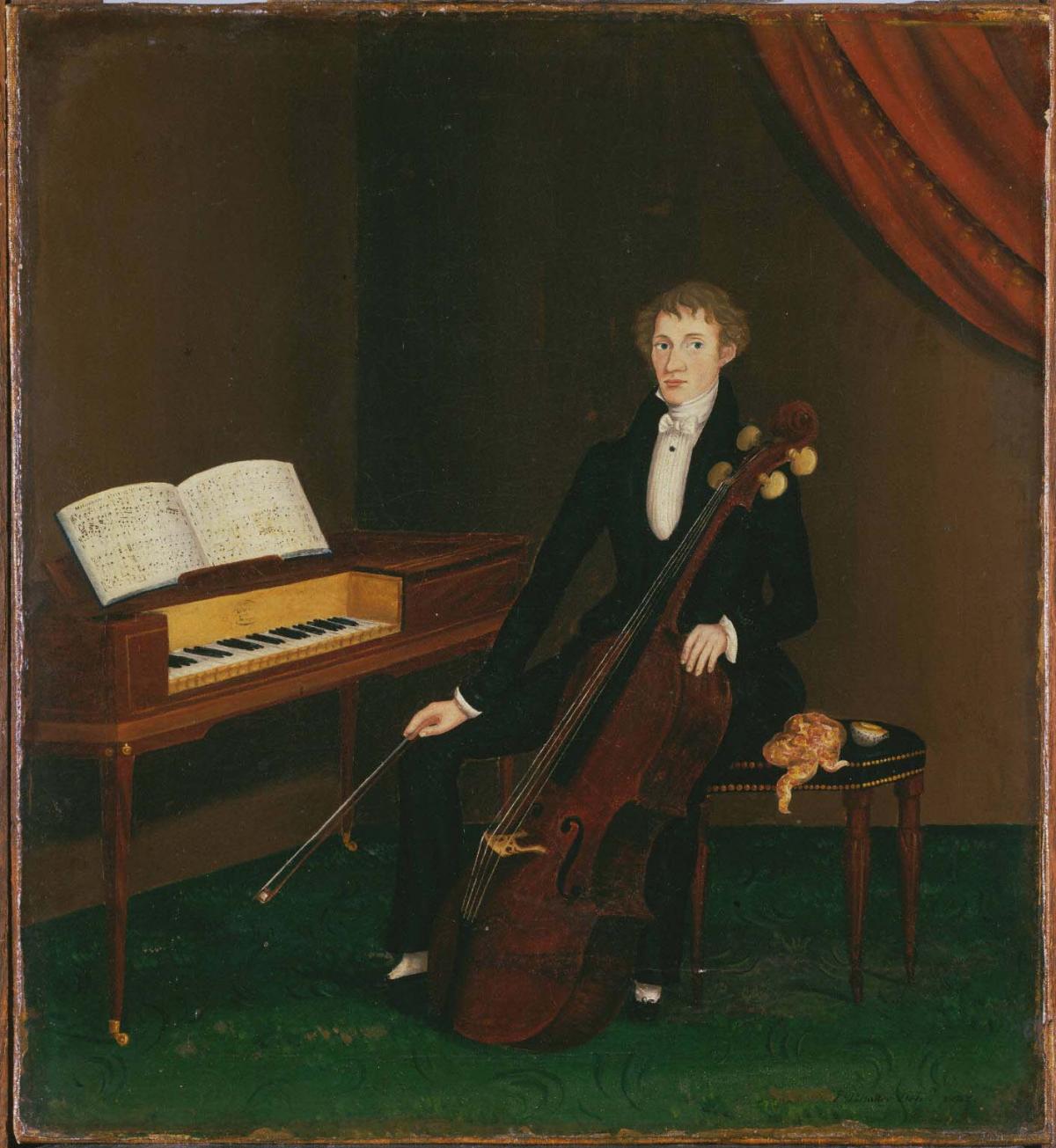The Cellist
John Bradley ( 1832 )

The Cellist is considered one of John Bradley’s great early works. It went on display for the first time in 1938 in New York, where it was instantly deemed the undisputed gem of the show. It was said that The Cellist was formerly owned by a Philadelphia musician who had acquired it in exchange for a rare violin. Although some believe that this portrait was painted in London as an example of the English school, the painting has been dated to 1832 when Bradley was already living in New York.
The Cellist, like other known paintings by this artist, is small in scale and depicts a full-length figure, which Bradley typically depicted when showing a sitter with a musical instrument. Nothing is known about the sitter, but he seems to be a man of means as well as a musician, as suggested by the elegant setting with a stylish pianoforte and cello prominently featured in the composition. The two objects on the Sheraton-style bench—a pink cloth kerchief and a pitch pipe or resin applicator for the use of the strings of the bow—also suggest that he is a practicing musician. The sheet music—a hymn published in London around 1820—is legible enough to be identified and played, showing the artist’s careful attention to detail. Bradley rendered the man’s striking features with faithfulness and verve. Painted with crisp lines and carefully noted details, the figure seems alive as he gazes directly at the viewer.
The figure’s awkward proportions are typical of a self-taught painter, as Bradley is assumed to be. An impossibly long right arm rests on a relatively short leg; the tiny feet, clad in black slippers, seem intended to convey the musician’s refinement, as does his slender form. Bradley’s unusual technique of highlighting contours of form to give them greater volume can be seen in the area of the sitter’s right knee and arm. Typical of Bradley’s portraits, and of self-taught portraitists in general, is the limited color palette—brown, white, and black—enlivened by such broad accents as the rich red curtain and green-figured carpet.